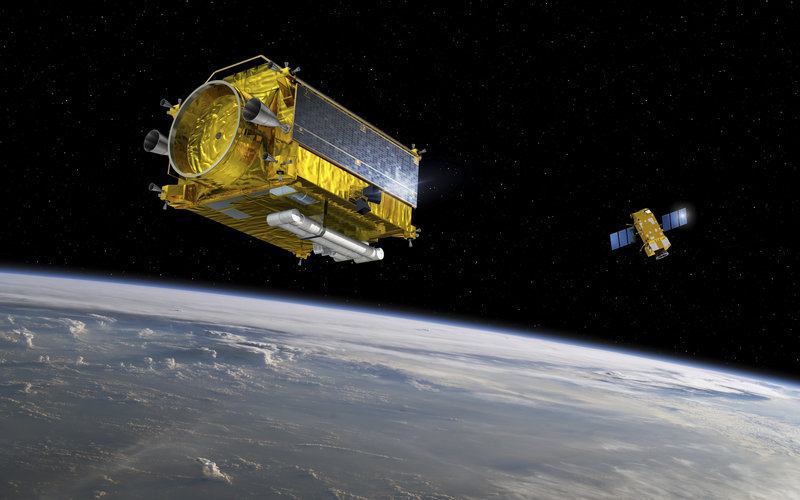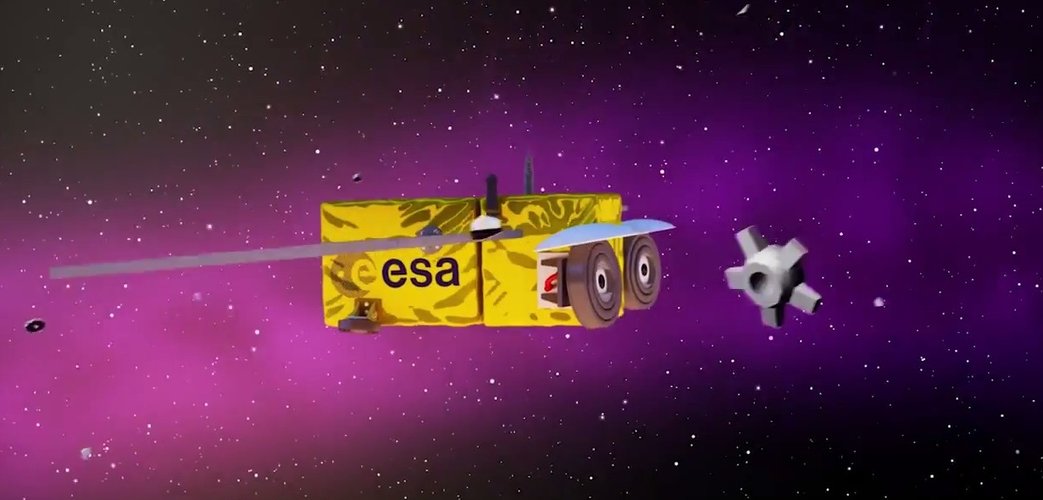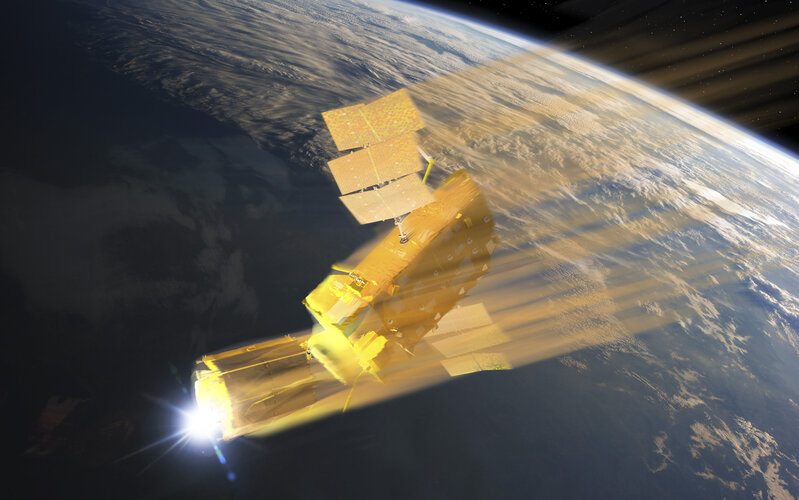Zero Debris Technologies
Humanity has left a significant mark on the space beyond Earth. In more than half a century of space activities, more than 6700 launches have placed some 20 000 satellites into orbit, of which about half are still operational and less than a third have reentered, with the rest posing a collision risk as space debris.
More than 36 000 orbiting items in total are regularly tracked by the Space Surveillance Networks and maintained in their catalogue, which covers objects larger than approximately 5 to 10cm in low Earth orbit (LEO) and 30cm to 1m at geostationary altitudes (GEO).
All space objects in Earth orbit together have a total mass of about 13 000 tonnes. Since 1961, more than 650 in-orbit fragmentations have been recorded. Except for some collisions, the majority of the break-ups were explosions of spacecraft and upper stages – typically due to leftover fuel, material fatigue or pressure increase in batteries.
Space debris is recognised as a major risk to space missions as an object of just 1cm can expend the energy of an exploding hand-grenade when impacting a satellite. ESA is playing a major role in the establishment of requirements to mitigate the production of fresh space debris and leads the way with its visionary Zero Debris Approach.
While ESA has a limited contribution to the current space debris environment, together with European industry the Agency plays a major role in the establishment of requirements to mitigate the production of fresh space debris and their implementation and verification in missions. An active community is coming together to support a debris-free, sustainable future with well over a hundred commercial, academic and other entities as well as countries signing the Zero Debris Charter and committing to ambitious goals and the development of the technologies necessary to achieve them.
Reducing the amount of space debris
The most effective means of stabilising the space debris environment is simply the reduction of mass within regions with high densities of space debris.
Corresponding requirements therefore mandate the avoidance of injection of mission related objects into densely populated regions such as low-Earth orbit (LEO) and geostationary orbit (GEO). They also request the removal of space systems that interfere with the LEO region not later than 5 years after the end of the mission. In practice, this is implemented by either launching into an orbit altitude on which the natural orbital lifetime is short, to reduce the orbital height to such altitudes after the mission, or to reorbit in a way that no part of the orbit interferes with the LEO region anymore. In GEO, satellites are to be disposed of in adjacent ‘graveyard orbits’ to keep the geostationary ring in use.
Mitigation requirements also ban space systems from undergoing uncontrolled reentry if the associated ground casualty expectancy exceeds 0.0001 per event. For such cases a controlled reentry over unpopulated areas is mandated instead. Small micro-satellites in LEO do not always have full orbital control capability while larger satellites require extra propellant and a high-thrust engine to ensure a controlled reentry, increasing their mass and cost. Different satellites require different technologies to fulfill the debris mitigation requirements.
ESA's Space Safety Programme and Technology Development Programme will investigate technologies that enable, simplify and make the compliance of missions with mitigation requirements more efficient and will oversee efforts to comply with these mitigation, seeking to plug current technological gaps in this area.
End-of-life reentry technologies

Hence, the development of compact, robust and autonomous systems for deorbiting of space craft in EIO and the re-orbiting of space craft in GEO is necessary.
Passive de-orbiting systems such as drag augmentation devices and tethers can be used for deorbiting and reentry (uncontrolled) of small satellites in LEO. direct and controlled re-entry are required, A number of candidate technologies can be applied to accelerate orbit decay, de-orbiting of space craft in LEO and re-orbiting of space craft in GEO, such as what are called ‘terminator sails’, with deployable or inflatable booms or electro-dynamic tethers using producing force from Earth’s magnetic field to increase the drag and speed up the spacecraft decay to speed up the dragging of satellites back to Earth by the atmosphere.
Even estimating how close a satellite has come to its end-of-life remains difficult: reliably measuring the amount of propellant in fuel tanks is challenging, because standard fuel gauges do not work in weightless environments. An accurate propellant gauging system is essential for end-of-life operations.
End-of-life passivation
In order to avert the risk of spacecraft break-up which could result in debris scattering, the passivation of propulsive systems and power systems could be employed. This involves the venting of remaining propellant and pressurant from the tanks at the end of missions and the discharge of batteries.
'Design for Demise'
Mission controllers need to know that space systems fulfil the on-ground safety requirement by design when undergoing an uncontrolled re-entry, a concept know as 'Design for Demise'. This engineering process was established for the intentional design, assembly, integration and testing of spacecraft so that a spacecraft will break-up once it enters the Earth’s atmosphere to such an extent so that it will not cause a threat to people or property on Earth.
'Design for Removal'
Active debris removal is the process where a chaser spacecraft docks with a satellite that is no longer operable and needs to be removed from orbit. After successfully grabbing hold, the stack of spacecraft will lower its orbit or even reenter to comply with debris mitigation guidelines. For a satellite to be 'designed for removal' means it has technology installed on its platform, such as a standardised coupling interface and navigation aides for close proximity operations, that prepare it for easy removal in case something happens that prevents it from complying with the guidelines under its own steam.
Space debris environmental modelling
Research is also conducted into modelling the behaviour of the dynamic, ever-changing space debris environment, as well as the development of technical means to collect measurements on man-made objects between 1mm and a few centimetres in diameter within the most critical orbital altitudes between 800 to 1000 km.















 Germany
Germany
 Austria
Austria
 Belgium
Belgium
 Denmark
Denmark
 Spain
Spain
 Estonia
Estonia
 Finland
Finland
 France
France
 Greece
Greece
 Hungary
Hungary
 Ireland
Ireland
 Italy
Italy
 Luxembourg
Luxembourg
 Norway
Norway
 The Netherlands
The Netherlands
 Poland
Poland
 Portugal
Portugal
 Czechia
Czechia
 Romania
Romania
 United Kingdom
United Kingdom
 Slovenia
Slovenia
 Sweden
Sweden
 Switzerland
Switzerland





























